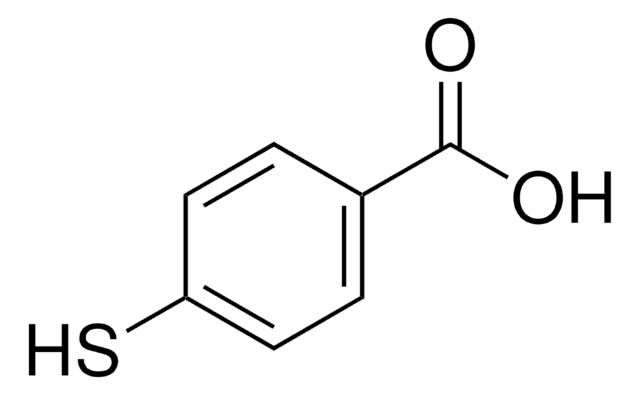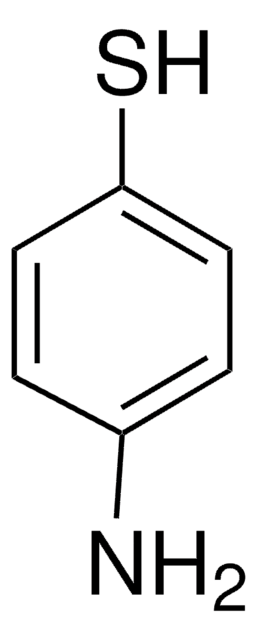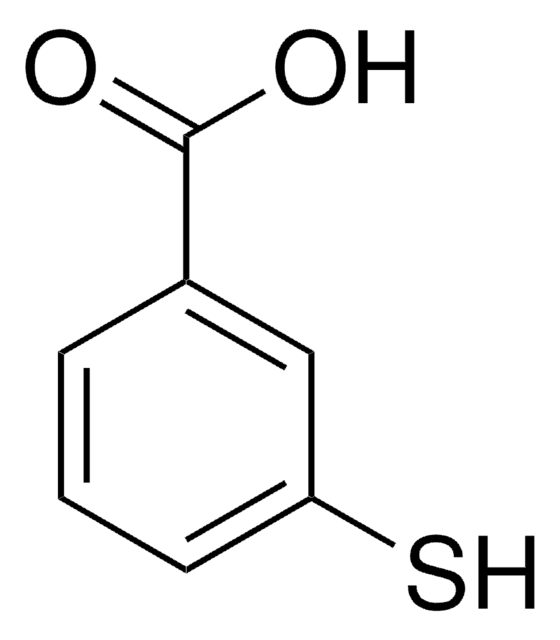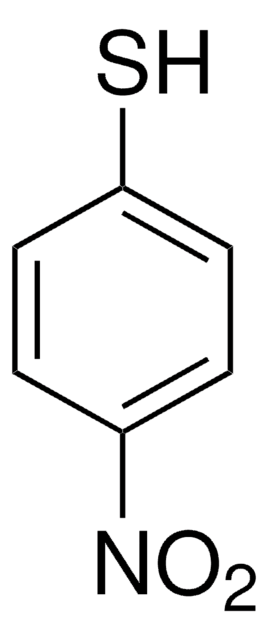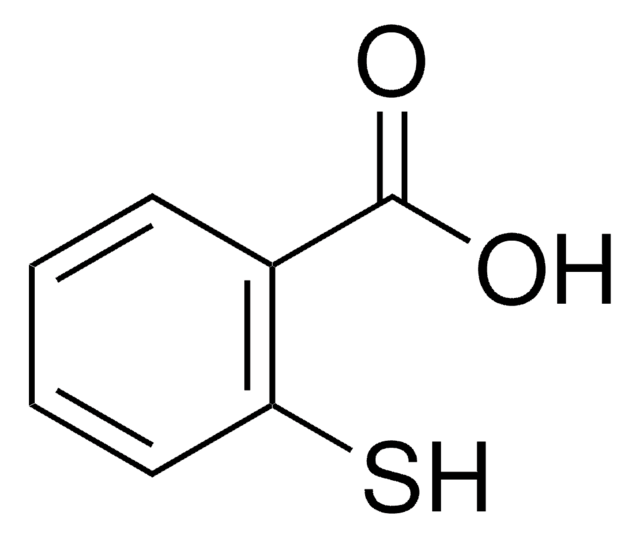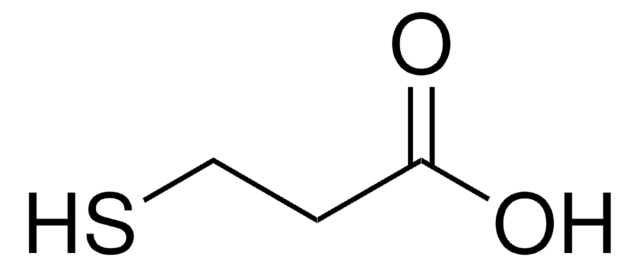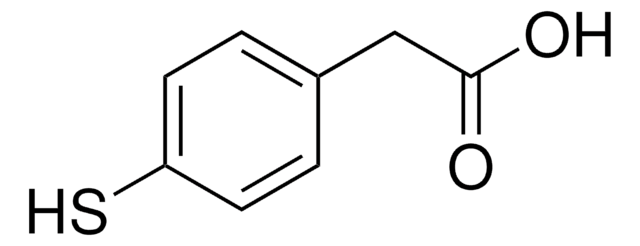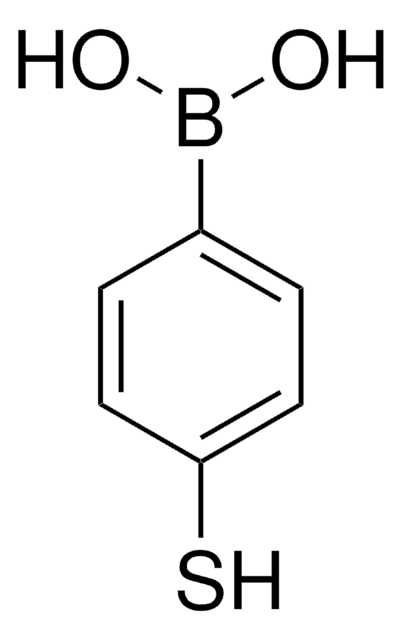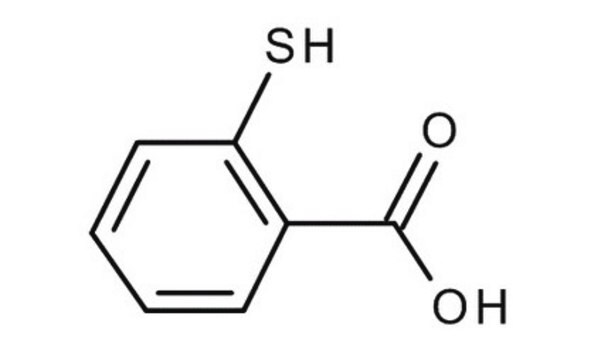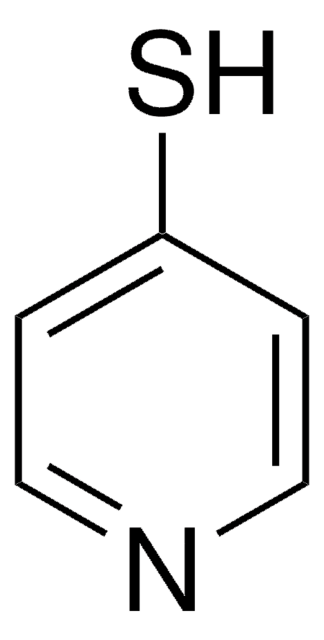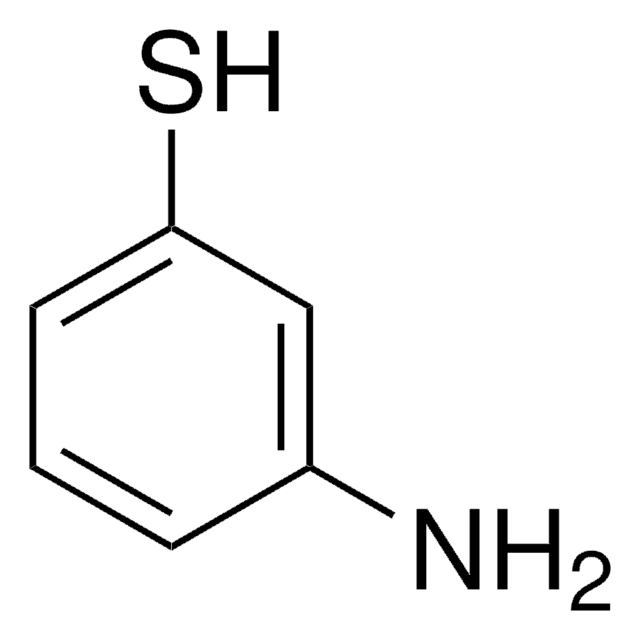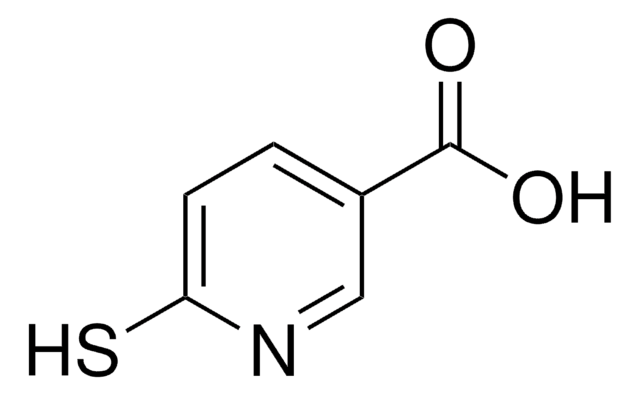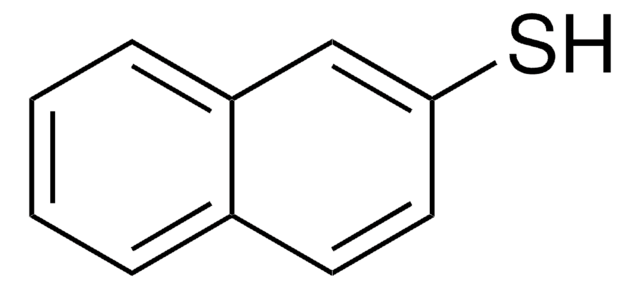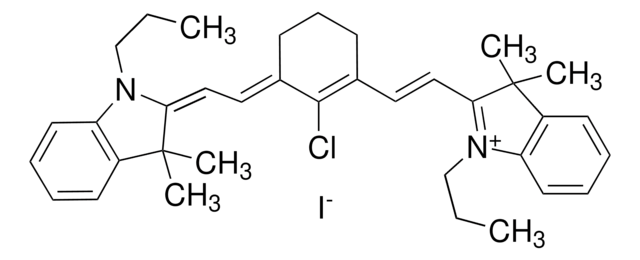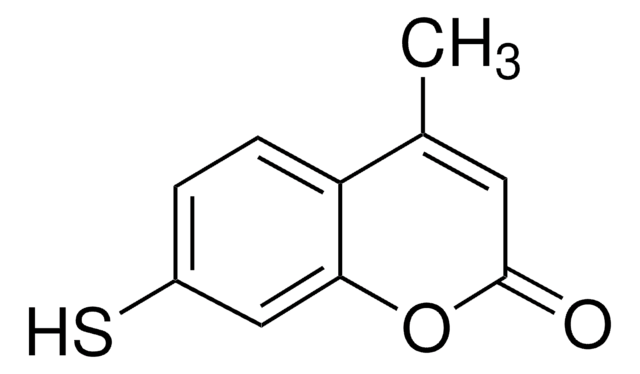Wichtige Dokumente
662534
4-Mercaptobenzoesäure
technical grade, 90%
Synonym(e):
4-Carboxybenzenethiol, 4-Carboxythiophenol, 4-Mercaptobenzoic acid, p-Carboxybenzenethiol, p-Mercaptobenzoic acid
About This Item
Empfohlene Produkte
Qualität
technical grade
Qualitätsniveau
Assay
90%
Form
solid
mp (Schmelzpunkt)
215-224 °C (lit.)
Funktionelle Gruppe
carboxylic acid
SMILES String
OC(=O)c1ccc(S)cc1
InChI
1S/C7H6O2S/c8-7(9)5-1-3-6(10)4-2-5/h1-4,10H,(H,8,9)
InChIKey
LMJXSOYPAOSIPZ-UHFFFAOYSA-N
Suchen Sie nach ähnlichen Produkten? Aufrufen Leitfaden zum Produktvergleich
Verwandte Kategorien
Allgemeine Beschreibung
Anwendung
- SERS substrate for food adulteration detection: 4-Mercaptobenzoic acid was employed in the layer-by-layer biopolymer assembly for the in situ fabrication of AuNP plasmonic paper, serving as a SERS substrate useful in detecting food adulteration (Viriyakitpattana et al., 2024).
- Development of magneto-plasmonic nanoparticles: Research highlighted the use of 4-Mercaptobenzoic acid in the multiwavelength SERS of magneto-plasmonic nanoparticles, obtained through combined laser ablation and solvothermal methods, showing versatility in nanoparticle synthesis (Talaikis et al., 2023).
Signalwort
Warning
H-Sätze
Gefahreneinstufungen
Eye Irrit. 2 - Skin Irrit. 2 - STOT SE 3
Zielorgane
Respiratory system
Lagerklassenschlüssel
11 - Combustible Solids
WGK
WGK 3
Flammpunkt (°F)
Not applicable
Flammpunkt (°C)
Not applicable
Persönliche Schutzausrüstung
dust mask type N95 (US), Eyeshields, Gloves
Hier finden Sie alle aktuellen Versionen:
Besitzen Sie dieses Produkt bereits?
In der Dokumentenbibliothek finden Sie die Dokumentation zu den Produkten, die Sie kürzlich erworben haben.
Kunden haben sich ebenfalls angesehen
Unser Team von Wissenschaftlern verfügt über Erfahrung in allen Forschungsbereichen einschließlich Life Science, Materialwissenschaften, chemischer Synthese, Chromatographie, Analytik und vielen mehr..
Setzen Sie sich mit dem technischen Dienst in Verbindung.